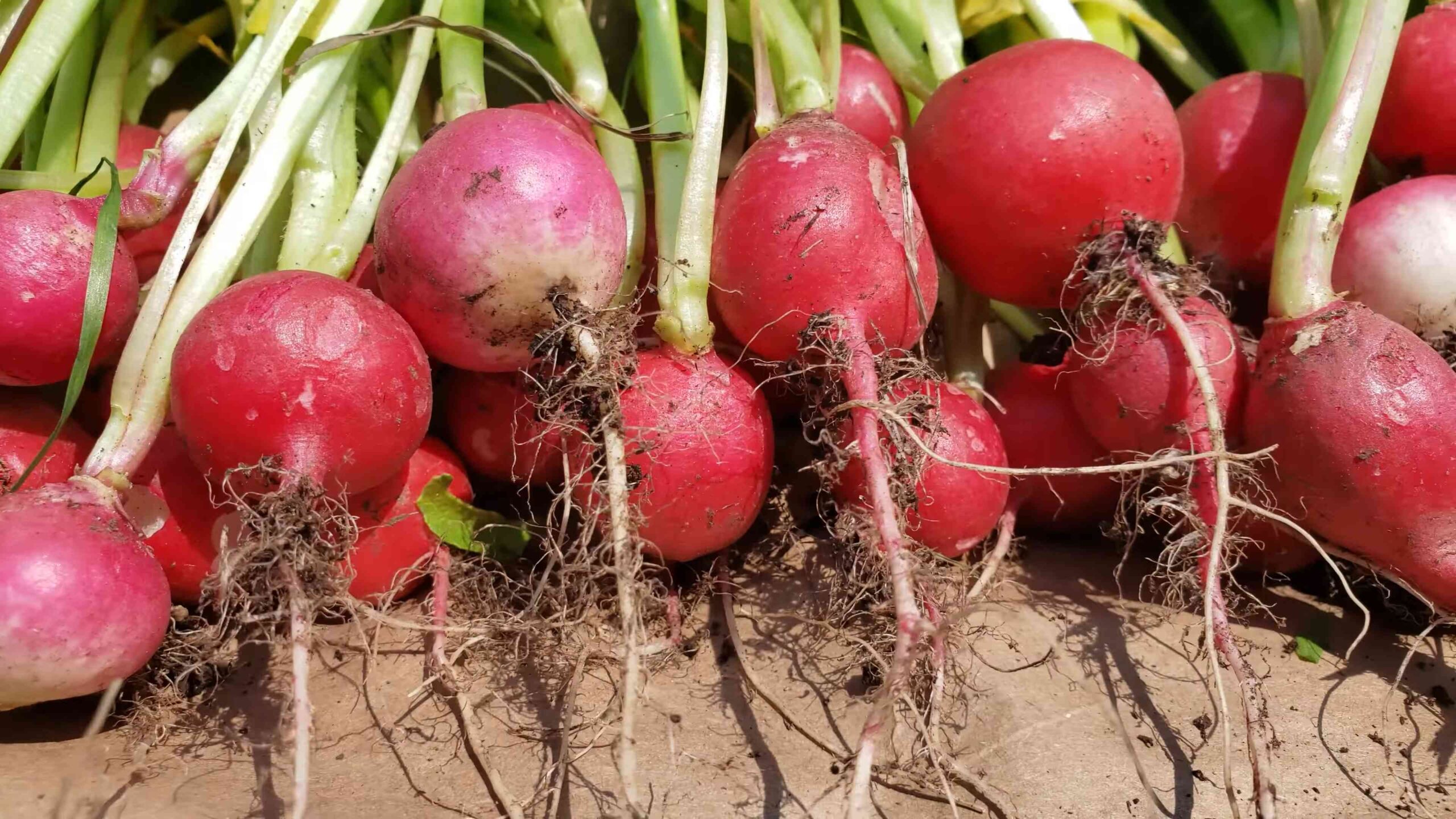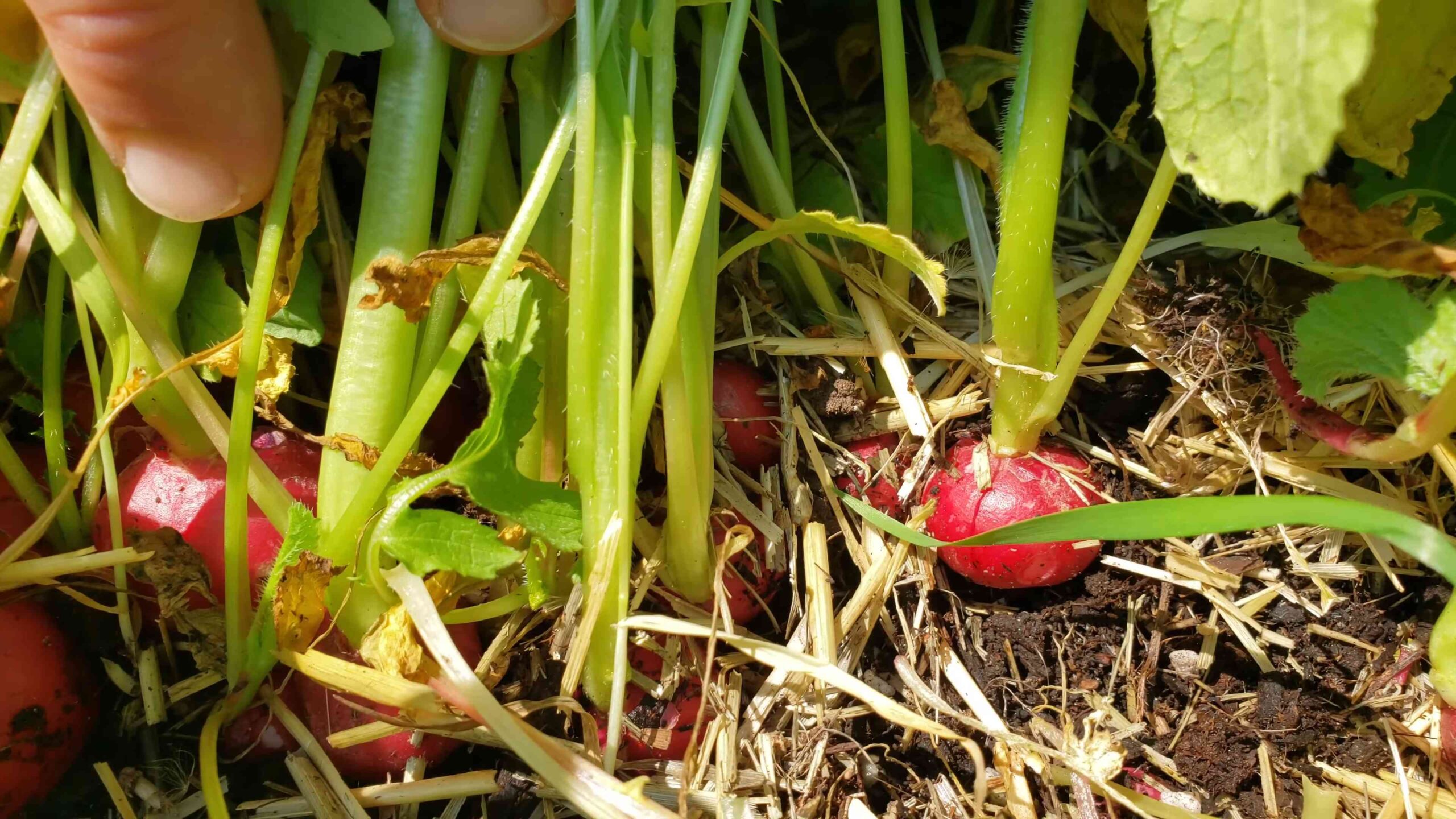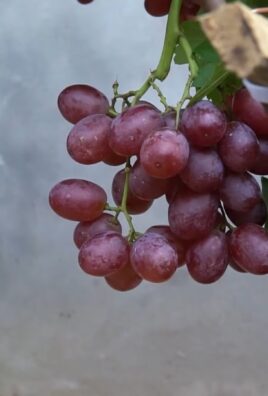Grow Radishes at Home? Absolutely! Imagine plucking crisp, peppery radishes straight from your own backyard, adding a burst of fresh flavor to your salads and snacks. It’s easier than you think, and this DIY guide will show you exactly how to make it happen, even if you’re a complete beginner.
Radishes have a surprisingly rich history, dating back to ancient times. They were cultivated in Egypt before the pyramids were built and were even valued by the Greeks and Romans for their medicinal properties. Today, they’re enjoyed worldwide, and growing your own is a fantastic way to connect with that history and enjoy a truly fresh, local food source.
Why should you bother with this DIY trick? Well, store-bought radishes often lack the vibrant flavor and crispness of homegrown ones. Plus, growing your own allows you to control the entire process, ensuring they’re free from harmful pesticides and chemicals. I’ve found that knowing exactly where my food comes from gives me a real sense of satisfaction. This article will give you the best tips and tricks to grow radishes at home. So, let’s dive in and discover the secrets to a bountiful radish harvest!

Grow Your Own Crunchy Radishes: A Beginner’s Guide
Hey there, fellow gardening enthusiasts! I’m so excited to share my experience growing radishes at home. They’re one of the easiest and fastest vegetables to cultivate, perfect for beginners like I was! Plus, nothing beats the fresh, peppery taste of homegrown radishes. Let’s dive in!
Choosing Your Radish Variety
Before we get our hands dirty, let’s talk about radish varieties. There are tons to choose from, each with its own unique flavor, size, and color. Here are a few of my favorites:
* Cherry Belle: These are classic, round, bright red radishes with a mild flavor. They’re super quick to mature, making them a great choice for impatient gardeners (like me!).
* French Breakfast: These are elongated, red radishes with a white tip. They have a slightly milder and sweeter flavor than Cherry Belles.
* Easter Egg: This is a mix of radishes in various colors – red, pink, purple, and white. It’s a fun and colorful addition to any garden.
* Black Spanish: These are large, round, black radishes with a strong, pungent flavor. They take a bit longer to mature but are worth the wait if you like a bolder taste.
* Watermelon Radish: Don’t let the name fool you! These radishes are green on the outside and bright pink on the inside, resembling a watermelon. They have a mild, slightly sweet flavor.
Tip: Consider planting a mix of varieties for a continuous harvest and a variety of flavors!
Preparing Your Radish Bed
Radishes are pretty low-maintenance, but they do need a few things to thrive. Here’s how to prepare the perfect radish bed:
* Sunlight: Radishes need at least 6 hours of sunlight per day. Choose a spot in your garden that gets plenty of sunshine.
* Soil: Radishes prefer loose, well-drained soil. If your soil is heavy clay, amend it with compost or other organic matter to improve drainage.
* pH: The ideal soil pH for radishes is between 6.0 and 7.0. You can test your soil pH with a soil testing kit from your local garden center.
* Fertilizer: Radishes don’t need a lot of fertilizer. In fact, too much nitrogen can cause them to grow leafy tops but small roots. Before planting, you can amend the soil with a balanced fertilizer, following the instructions on the package. I usually use a fertilizer with an NPK ratio of 5-10-10.
Planting Your Radish Seeds
Now for the fun part – planting! Here’s how to sow your radish seeds:
1. Prepare the soil: Rake the soil smooth and remove any rocks or debris.
2. Make furrows: Create shallow furrows about ½ inch deep and 1 inch apart. You can use your finger or a garden tool to make the furrows.
3. Sow the seeds: Sprinkle the radish seeds evenly into the furrows. Don’t sow them too thickly, or you’ll have to thin them later.
4. Cover the seeds: Gently cover the seeds with soil.
5. Water gently: Water the soil gently with a watering can or hose with a gentle spray nozzle. Be careful not to wash away the seeds.
6. Label your rows: It’s always a good idea to label your rows so you know what you’ve planted.
Tip: Radishes can be planted in succession every 1-2 weeks for a continuous harvest.
Caring for Your Radishes
Radishes are relatively easy to care for. Here’s what you need to do to keep them happy and healthy:
* Watering: Keep the soil consistently moist, but not soggy. Water deeply when the top inch of soil feels dry.
* Weeding: Keep the radish bed free of weeds. Weeds compete with radishes for nutrients and water.
* Thinning: If you sowed your seeds too thickly, you’ll need to thin them out. When the seedlings are about 1 inch tall, thin them to about 1 inch apart. This will give the radishes enough room to grow.
* Pest control: Radishes are generally pest-resistant, but they can be attacked by flea beetles. Flea beetles are small, jumping insects that chew small holes in the leaves. You can control flea beetles with insecticidal soap or neem oil.
* Bolting: Bolting is when a plant prematurely flowers and goes to seed. This can happen if radishes are exposed to hot weather or drought stress. To prevent bolting, keep the soil consistently moist and provide shade during the hottest part of the day.
Tip: Mulching around your radish plants can help to retain moisture, suppress weeds, and regulate soil temperature.
Harvesting Your Radishes
The best part of growing radishes is harvesting them! Radishes are typically ready to harvest in 3-4 weeks, depending on the variety.
1. Check for maturity: To check if your radishes are ready to harvest, gently brush away the soil around the base of the plant. If the radish is the size you want, it’s ready to pick.
2. Pull them up: Gently pull the radishes out of the ground. If they’re difficult to pull, loosen the soil around them with a garden fork.
3. Wash and store: Wash the radishes thoroughly and remove the tops and roots. Store them in a plastic bag in the refrigerator for up to a week.
Tip: Harvest radishes when they are young and tender. Overripe radishes can become woody and bitter.
Troubleshooting Common Radish Problems
Even with the best care, you might encounter a few problems when growing radishes. Here are some common issues and how to fix them:
* Radishes are small and skinny: This could be due to overcrowding, lack of sunlight, or poor soil. Thin the plants, make sure they’re getting enough sunlight, and amend the soil with compost.
* Radishes are cracked: This is usually caused by inconsistent watering. Keep the soil consistently moist, especially during hot weather.
* Radishes are bitter: This can be caused by hot weather, drought stress, or overmaturity. Harvest radishes when they are young and tender, and keep the soil consistently moist.
* Radishes are woody: This is usually caused by overmaturity. Harvest radishes when they are young and tender.
* Radish leaves are eaten: This could be due to flea beetles or other pests. Control pests with insecticidal soap or neem oil.
Creative Ways to Enjoy Your Radishes
Now that you’ve harvested your radishes, it’s time to enjoy them! Here are a few of my favorite ways to eat radishes:
* Raw: Radishes are delicious raw, sliced thinly and added to salads, sandwiches, or tacos.
* Roasted: Roasting radishes mellows their flavor and brings out their sweetness. Toss them with olive oil, salt, and pepper, and roast them at 400 degrees Fahrenheit for 20-25 minutes.
* Pickled: Pickled radishes are a tangy and crunchy addition to any meal.
* Radish greens: Don’t throw away the radish greens! They’re edible and nutritious. You can sauté them, add them to salads, or use them in pesto.
Tip: Radishes pair well with butter, salt, and crusty bread. It’s a simple and delicious snack!
Extending Your Radish Season
Want to enjoy fresh radishes for as long as possible? Here are a few tips for extending your radish season:
* Succession planting: Plant radishes every 1-2 weeks for a continuous harvest.
* Planting in containers: Radishes can be grown in containers, which allows you to move them to a cooler location during hot weather.
* Using row covers: Row covers can protect radishes from frost and pests.
* Choosing heat-tolerant varieties: Some radish varieties are more heat-tolerant than others. Choose these varieties for planting during the summer months.
Radish Seed Saving (For the Advanced Gardener!)
If you’re feeling adventurous, you can even save your own radish seeds! This is a great way to preserve your favorite varieties and save money.
1. Select healthy plants: Choose healthy, vigorous plants to save seeds from.
2. Allow plants to bolt: Allow the plants to bolt and flower.
3. Harvest seed pods: Once the seed pods are dry and brown, harvest them.
4. Dry the seed pods: Spread the seed pods out on a tray and allow them to dry completely.
5. Thresh the seeds: Thresh the seeds by rubbing

Conclusion
So, there you have it! Growing radishes at home is not only surprisingly simple, but also incredibly rewarding. Forget those bland, store-bought radishes that lack that peppery punch. With just a few simple steps and minimal effort, you can cultivate a vibrant crop of crisp, flavorful radishes right in your own backyard, balcony, or even on a sunny windowsill.
Why is this DIY trick a must-try? Because it puts you in control. You get to choose the variety, ensuring you’re growing radishes that perfectly suit your taste. You can control the growing conditions, guaranteeing the freshest, most organic produce possible. And let’s be honest, there’s a certain satisfaction that comes from nurturing something from seed to table. It’s a connection to nature, a mindful activity, and a delicious outcome all rolled into one.
Beyond the basic method, there’s plenty of room for experimentation. Try different radish varieties! From the classic cherry belle to the spicy French breakfast or the vibrant watermelon radish, each offers a unique flavor profile and visual appeal. Consider companion planting. Radishes are known to deter pests and improve the growth of other vegetables like carrots and lettuce. Plant them together for a mutually beneficial garden ecosystem. You can also adjust the planting schedule to ensure a continuous harvest throughout the growing season. Successive sowing, planting new seeds every couple of weeks, will keep you supplied with fresh radishes for weeks on end.
Don’t be afraid to get your hands dirty and experiment with different soil types or watering techniques to find what works best for your specific environment. Perhaps you’ll discover that adding compost tea every other week gives your radishes an extra boost, or that a specific type of container drainage prevents them from becoming waterlogged. The beauty of gardening is that it’s a constant learning process.
Growing radishes at home is a gateway to a more sustainable and flavorful lifestyle. It’s a small step you can take to connect with your food, reduce your reliance on grocery stores, and enjoy the unparalleled taste of homegrown produce.
We wholeheartedly encourage you to give this DIY trick a try. It’s a fun, easy, and rewarding project that anyone can undertake, regardless of their gardening experience. And once you’ve harvested your first batch of homegrown radishes, we’d love to hear about your experience! Share your tips, tricks, and photos in the comments below. Let’s create a community of radish enthusiasts and inspire others to discover the joy of growing their own food. What variety did you choose? What challenges did you face, and how did you overcome them? Your insights could be invaluable to other aspiring gardeners. So, grab your seeds, get planting, and get ready to enjoy the delicious rewards of your labor! Happy gardening!
Frequently Asked Questions (FAQ)
What is the best time of year to plant radishes?
Radishes are cool-season crops, meaning they thrive in cooler temperatures. The best time to plant radishes is in early spring or late summer/early fall. In spring, plant them as soon as the soil can be worked, typically 4-6 weeks before the last expected frost. For a fall harvest, plant them 4-6 weeks before the first expected frost. Avoid planting during the hottest months of summer, as high temperatures can cause the radishes to bolt (go to seed) and develop a strong, unpleasant flavor.
How much sunlight do radishes need?
Radishes need at least 6 hours of sunlight per day to grow properly. While they can tolerate some shade, especially during the hottest part of the day, insufficient sunlight can result in leggy growth and smaller, less flavorful radishes. Choose a planting location that receives ample sunlight throughout the day. If you’re growing radishes indoors, consider using grow lights to supplement natural sunlight.
What kind of soil is best for growing radishes?
Radishes prefer loose, well-drained soil that is rich in organic matter. Heavy clay soil can hinder root development and result in misshapen radishes. Amend heavy soil with compost, aged manure, or other organic materials to improve drainage and aeration. A slightly acidic to neutral soil pH (around 6.0 to 7.0) is ideal. Before planting, loosen the soil to a depth of at least 6 inches to allow the radish roots to grow freely.
How often should I water radishes?
Radishes need consistent moisture to grow quickly and develop a crisp texture. Water them regularly, especially during dry periods. Aim to keep the soil consistently moist but not waterlogged. Overwatering can lead to root rot, while underwatering can cause the radishes to become tough and bitter. A good rule of thumb is to water deeply whenever the top inch of soil feels dry to the touch. Mulching around the plants can help retain moisture and suppress weeds.
How long does it take for radishes to grow?
One of the great things about radishes is that they are quick to mature. Most varieties are ready to harvest in just 3-4 weeks from planting. Check the seed packet for the specific maturity time of the variety you are growing. To ensure a continuous harvest, plant a new batch of seeds every week or two.
Why are my radishes cracking?
Cracking in radishes is often caused by inconsistent watering. If the soil dries out and then is suddenly saturated with water, the radishes can grow too quickly, causing the skin to crack. To prevent cracking, water regularly and consistently, especially during dry spells. Mulching can also help maintain consistent soil moisture.
Why are my radishes all tops and no bottoms?
Several factors can contribute to radishes that are all tops and no bottoms. Insufficient sunlight, overcrowding, and poor soil can all hinder root development. Make sure your radishes are getting at least 6 hours of sunlight per day, thin the seedlings to the recommended spacing, and plant them in loose, well-drained soil that is rich in organic matter.
Can I eat radish greens?
Yes, radish greens are edible and nutritious! They have a peppery flavor similar to the radishes themselves. You can use them in salads, soups, stir-fries, or as a garnish. Choose young, tender greens for the best flavor and texture. Wash them thoroughly before using.
What are some common pests and diseases that affect radishes?
Radishes are generally pest-resistant, but they can be susceptible to certain pests and diseases, such as flea beetles, root maggots, and fungal diseases. Flea beetles can chew small holes in the leaves, while root maggots can damage the roots. Fungal diseases can cause the leaves to develop spots or rot. To prevent pest and disease problems, practice good garden hygiene, such as removing weeds and debris, and rotate your crops each year. You can also use organic pest control methods, such as insecticidal soap or neem oil, to control pests.
How do I store radishes after harvesting?
To store radishes, remove the greens and wash the radishes thoroughly. Place them in a plastic bag or container lined with a damp paper towel and store them in the refrigerator. Radishes stored this way can last for up to 2 weeks. You can also store radish greens separately in a plastic bag in the refrigerator for a few days.





Leave a Comment